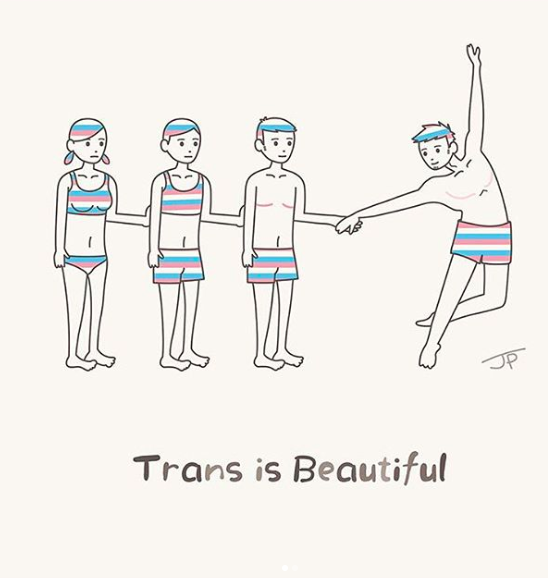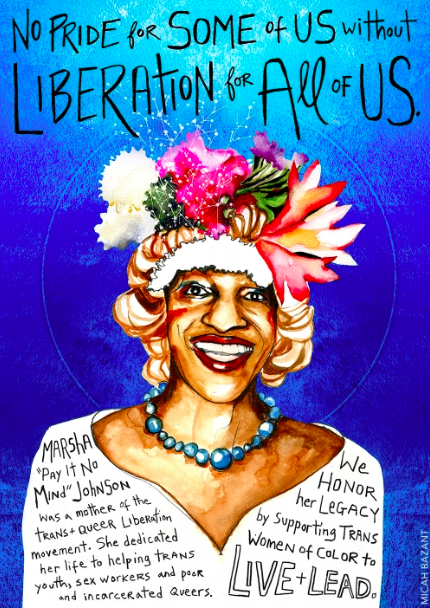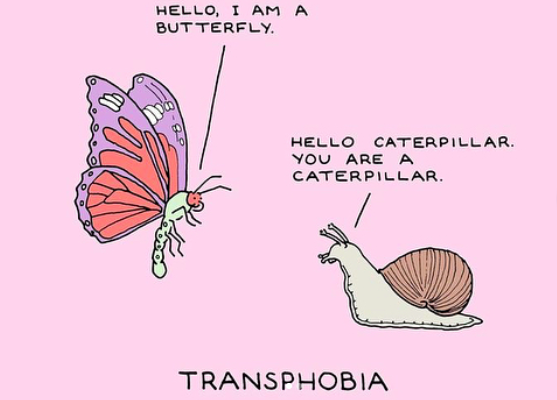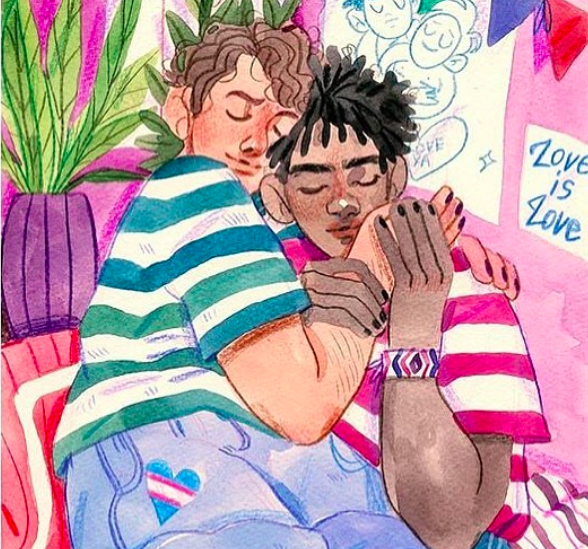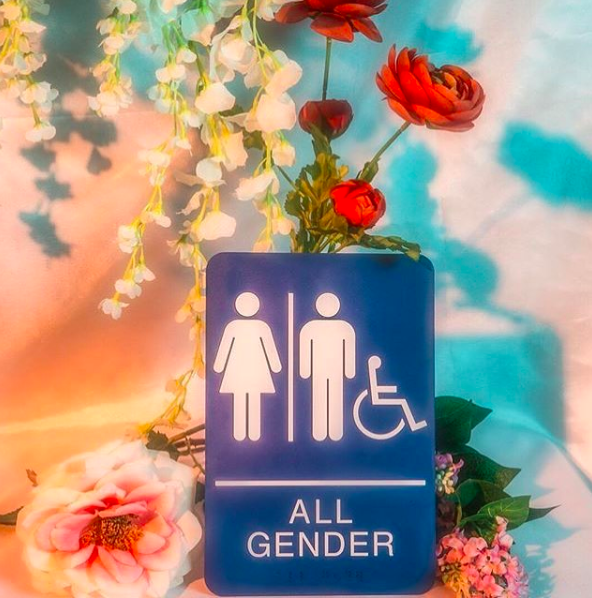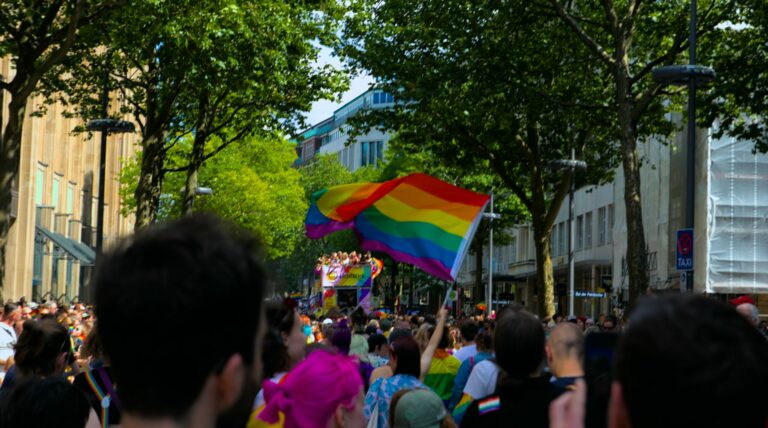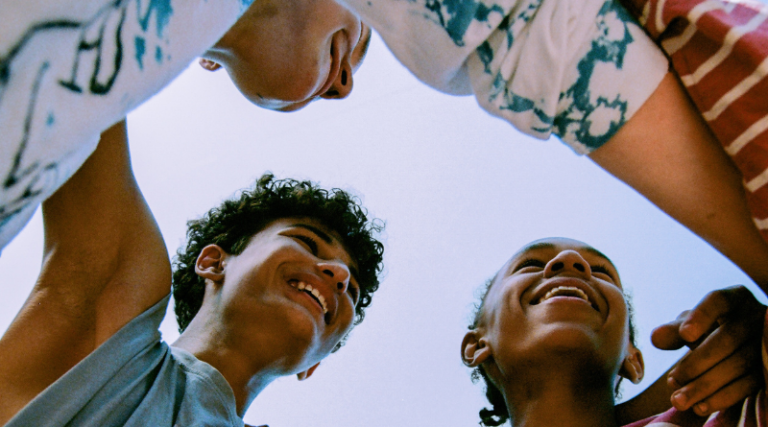What is transphobia and how can we challenge it?
Trans rights and trans activism is something we all need to learn about to challenge transphobia
This article explores what it means to be transgender (trans), and the very dangerous effects of transphobia. By educating ourselves on trans lives and trans rights, we can all learn how to practise allyship and build a safer world for our trans brothers, sisters and siblings.
We’ve launched our transformative content series: “Am I trans?” Translating sex, identity & relationships, supporting trans+ and non-binary young people to access sex and relationships education that is relevant to their experiences and needs. Discover the full series here.
What does it mean to be transgender?
Trans people identify with a different gender to the one they were assigned at birth. Cisgender (cis) people are people whose gender identity matches the one they were assigned at birth. We attach a child’s gender to their sex, as in their biological traits (genitals, hormones, chromosomes, etc.). When a baby is born with a penis and balls, we assume that they are a boy who will grow up to be a man. Similarly, babies born with a vulva and vagina are raised as girls, and we expect them to grow up as women. But this isn’t the case for everyone.
How do trans people identify?
Not all trans people are the same. They don’t think the same way, identify the same way, live the same lives, or identify with gender in the same way. When talking about trans issues and trans people, we have to be careful to not assume everyone is the same. Some trans folk are non-binary, some are genderfluid, or genderqueer or agender, while some are trans men or trans women.
We are living in a time where some trans people are able to be more vocal about their experiences, their lives and the marginalisation they face on a day to day basis. This does not mean that overall trans people are free from oppression and are able to live their lives exactly the way they desire.
If you want to learn more about being trans, Stonewall has a great Q&A that addresses some of the most common questions and misconceptions.
What is transphobia?
Trans rights and trans activism is important because trans people face an immense amount of discrimination, prejudice and hate in the form of transphobic language, attitudes, actions and laws – just because their gender is different to the one society assigned them.
Here are some findings from Stonewall’s 2018 report:
- Almost half of trans (48%) of trans people don’t feel comfortable using public toilets through fear of discrimination or harassment
- More than 2 in 5 trans people (44%) avoid certain streets because they don’t feel safe there as an LGBTQ+ person
- A third of trans people (34%) have been discriminated against because of their gender identity when visiting a cafe, restaurant, bar or nightclub in the last year
- A quarter of trans people in the UK (25%) have experienced homelessness at some point in their life
- More than a third of trans students (36%) in higher education have experienced negative comments or behaviour from staff in the last year
This is why we need to be aware of trans people’s position in society and actively fight to improve it.
Transphobia is a term used to describe people who are prejudiced against, and discriminate against, people who identify as transgender. It’s an intolerance and/or hatred of gender diversity, and this centres around the belief that there are only two gender identities: male or female. In fact there are lots of gender identities including, but not limited to: trans men, trans women, and non-binary, agender, genderqueer and genderfluid people.
Misgendering
Transphobia can manifest itself in many different ways. One of the most common is misgendering. Misgendering is when you refer to someone using their wrong pronouns. We use pronouns all the time, often without even realising, in place of names. For example: he/him, she/her or they/them. An example of misgendering would be if someone’s pronouns are ‘they/them’ and you use ‘he’ or ‘she’.
Not all misgendering is meant in an intentionally harmful way – sometimes people make mistakes, sometimes they forget. UK society is very cisnormative, meaning we’re surrounded by norms and expectations that assume everyone is cisgender (identifying with the gender they were assigned at birth). Some examples include: dividing children by girls/boys in school, asking pregnant people if they’re expecting a boy or girl, assuming someone is female and uses she/her pronouns if they look typically feminine, and vice versa assuming someone is male and uses he/him pronouns if they look typically masculine.
Because we’re surrounded by cisnormativity, it takes work and effort to change our actions and language to be inclusive of trans people. But this work and effort is really important. We need to actively think about the words and pronouns we use to be more inclusive. A good way to avoid unintentionally misgendering a person is to ask them what their personal pronouns are.
However, misgendering can also be done on purpose to intentionally hurt someone. This is a cruel way to cause harm and pain to someone. People misgender in order to show that they don’t accept a person’s gender identity. This is transphobic. Sadly, trans people fight every day to be recognised as who they are.
Being trans is normal and natural
Some people argue being trans is unnatural, or that it’s not the way we should live. They believe that biology dictates men are men, and women are women. It’s the same reasons a lot of these groups are homophobic. The bottom line is that trans people exist, therefore it is natural. Gay, lesbian, bi and pan people exist, therefore it is natural. Non-binary people exist, therefore – you guessed it – it’s natural.
If someone identifies with a different gender to the one they were assigned at birth, they should be free to make informed choices about this. People who identify outside the traditional gender binary of male/female should be free to live their lives without experiencing hate or violence.
What are TERFs?
You might have heard of the acronym TERF, which stands for ‘trans exclusionary-radical feminist’. TERFs exclude trans people (especially trans women) from the women’s rights movement, claiming that ‘real’ women are being sidelined once again in favour of ‘men’ who say they identify as women. They argue trans women can never understand what it is like to grow up as a cisgender woman, as they have never faced the same set of oppressions – because they’ve had the privilege of being seen as a ‘man’ within society.
It’s true that trans women have not grown up knowing what it’s like to be treated by society as a woman from birth. However, this DOES NOT mean they have lived their life with male privilege. It means they have faced a separate set of difficulties and different forms of discrimination called trans-misogyny.
Both cisgender women and transgender women suffer under the patriarchy. Just because one person’s fight is not exactly the same as your fight, does not make your fight less valid. This is something TERF groups need to learn. TERFs fighting against trans women is not going to help dismantle the patriarchy. All women, regardless of their gender assigned at birth, may face additional and interconnected oppressions in society, such as racism and ableism. We all need to work to be intersectional.
The bathroom argument
One row over trans issues that’s gained a lot of media attention in the UK is the ‘bathroom’ debate. There has been a lot of backlash over the idea of trans women using women’s public bathrooms. This is largely rooted in an argument that cisgender women won’t feel safe in these spaces if transgender women are allowed into them, or that children shouldn’t be exposed to trans women.
This is eye-opening on two levels.
First of all, it shows that people are not willing to accept that trans women are women, and they can’t see past our reproductive organs.
Secondly it points to a much larger problem. If women are terrified of people who they see as men using women’s bathrooms, then we have a much bigger issue than trans women using the same space. This is an indicator of how scared women can be to be alone in enclosed spaces with men – and this is a very real issue. Therefore, the bathroom argument really isn’t about a fear of trans women. It is a fear of men. A fear of rape culture. A fear of gendered violence. And that is the real conversation we should be having.
Trans women face a huge amount of social prejudice and discrimination when accessing women’s public bathrooms. The idea that a cis man would put themselves through this just to infiltrate a women’s toilet is absurd. And expecting transgender women to use male bathrooms leaves them vulnerable to harassment and violence from cisgender men.
Gender should be a playground and not a prison
Trans and non-binary activism is so incredibly important. It shows us that gender is not one thing. No one is confined to a box, and your identity is valid regardless of where that is on the gender spectrum. No one is forcing cis people to change. We are just asking for recognition that not everybody is cis.
There is literally nothing to lose and everything to gain by standing arm in arm with the trans community and shouting: we will not stand for transphobia, not today, not tomorrow, not ever.
Other support
- “Am I trans?” Translating sex, identity & relationships: discover the full series here
- LGBTQ+ Counselling Guide
- Brook – Find LGBTQ+ support near you
- Galop – supporting LGBTQ+ people who have experienced abuse and violence
- Stonewall – The truth about trans
- Anna Thompson via Rumie – Why is International Transgender Day of Visibility so important?
Read more
Last Reviewed 22 August 2022
Image Credit: The Gender Spectrum Collection


